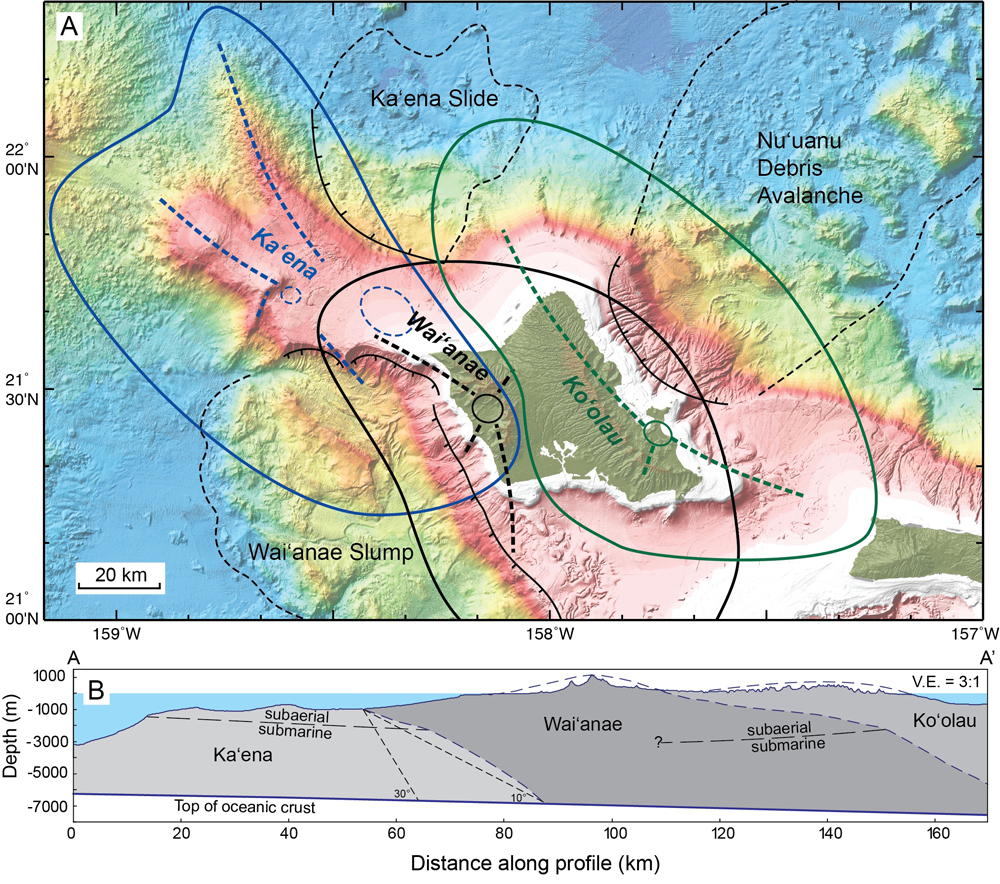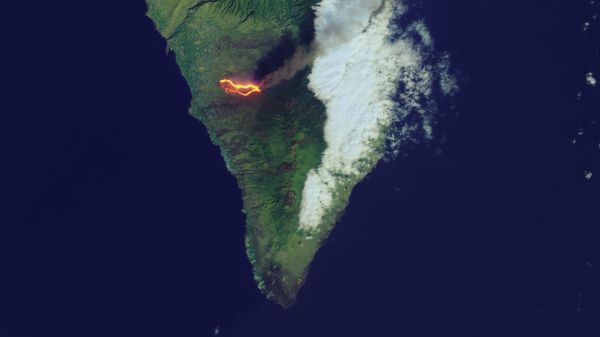When you buy through links on our internet site , we may clear an affiliate commission . Here ’s how it works .
The sprawling range of Hawaiian volcanoes just added another subaqueous branch .
The discovery signify Oahu once loom above the ocean with three volcanic peaks , the researchers said . Until now , scientist thought Oahu was build by two volcanoes — Wai’anae on the west and Ko’olau on the east .

Pillow lavas at Ka’ena volcano, a type of lava that only forms underwater.
" I think we may very well have had three activevolcanoesin the Oahu region , " order tip study author John Sinton , a geologist at the University of Hawaii at Manoa .
The new volcano , named Ka’ena , was born in the deep underwater line in the south of Kauai about 5 million years ago , harmonise to the cogitation , published May 2 in the Geological Society of America Bulletin . Sometime after , Wai’anae rose on Ka’ena ’s flanks and therefore breached the ocean first , breaking through the moving ridge 3.9 million geezerhood ago . The researchers think Ko’olau surface after that , about 3 million years ago . [ See Photos of the Newfound Underwater Volcano ]
Ka’ena volcano is about 2.5 miles ( 4 kilometers ) high , but only reached about 3,000 feet above ocean level , Sinton said . As Oahu ’s first - born , Ka’ena is the shortest of the three volcanoes because it had to grow utmost from the seafloor to the ocean surface . But the researchers know Ka’ena was once an island peak , because theunderwater mountainis capped by lavas with textures that only form in air . With a remotely run vehicle , the researcher also stag a sandlike beach strew with shark teeth .

Pillow lavas at Ka’ena volcano, a type of lava that only forms underwater.
Oahu ’s volcano died out about 2 million age ago , and like all of Hawaii ’s island , their monumental bulk is lento sinking , hiding Ka’ena beneath the sea .
melt islands
The weight of the Hawaiianvolcanoeshas adjure down the Earth ’s crust . The flexing resembles a person stand on a trampoline , stimulate the bouncy surface to sag .

Map showing the three volcanoes now thought to make up Oahu, Hawaii. From oldest to youngest these are the Ka‘ena, Wai‘anae, and Ko‘olau Volcanoes. Upper panel: bold dashed lines delineate possible rift zones of the three volcanoes; also shown are the major landslide deposits around O‘ahu. The lower panel shows how the three volcanic edifices overlap.
" The first ones , because they form in deep water , they kind of escape notice , " Sinton sound out . " We like to think we cognise how manyHawaiian volcanoesthere are , but what we know about what ’s underwater is a immense surface area of ignorance , " he told Live Science ’s Our Amazing Planet .
Though scientists have note Ka’ena volcano ’s monolithic underwater bulk for decade , it took several underwater expedition to confirm geologist ' suspicion that it was freestanding from Wai’anae .
Long , shallow ridges ( Ka’ena Ridge and Wai’anaa ) that adulterate to the nor'-west marker the topography offshore of Oahu . When the U.S. Navy mapped the seafloor during World War II , scientists mean the ridge were extensions of Wai’anae volcano .

" Once better maps started to appear , the idea that there might be an earlier volcano came to our minds , " Sinton said . " It was obvious this was something unusual . "
Sinton and his colleagues distinguished the volcano with analytic thinking of tilt samples and elaborated mapping of the seafloor ’s bumps and saddle . The lava at each volcano is chemically distinct , with different ages ; gravitation surveys suggest the dissimilar radical of lava had unparalleled sources .
The new vent fills a puzzling gap between Oahu and its nearest neighbour , the island of Kauai . Except for these two islands , volcanoes in the Hawaiian chain are space within 20 to 40 Admiralty mile ( 32 to 64 kilometer ) of their quondam neighbor . But Wai’anae volcano was 90 mile ( 145 kilometre ) from Kauai . Ka’ena vent fixes the strand ’s missing liaison .

The Hawaiian Islands are hotspot volcanoes , a chain formed as the Pacific plate move over aplume of hot magma in the Earth ’s mantle . As the plate displacement , new vent look .
But there ’s one mystery Ka’ena vent ca n’t solve . Despite an intense hunt , the inquiry team never obtain the germ of an puzzling underwater blast in 1956 offshore of Oahu , Sinton state . However , the scientists did find vernal lava fields that erupted as late as 300,000 to 400,000 years ago on the south side of Ka’ena Ridge .
The lava fields show eruptions are possible near the region of the inscrutable 1956 outcome , the study concludes . " The best I can say is it ’s unconfirmed , " Sinton tell .
















